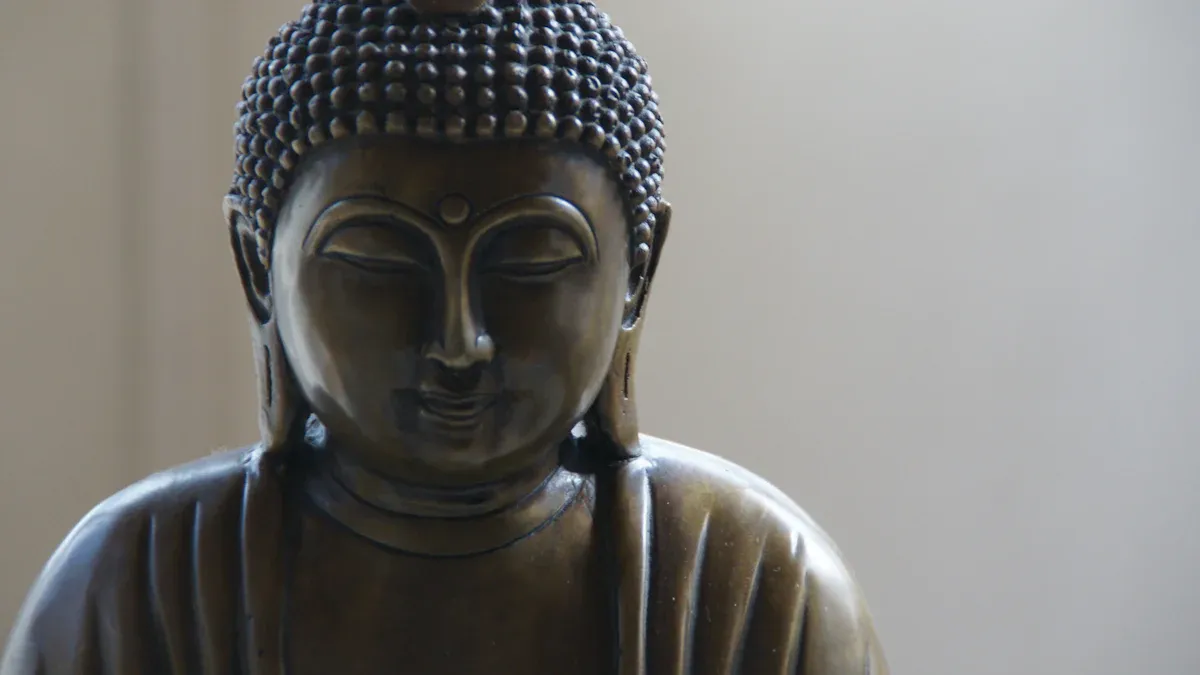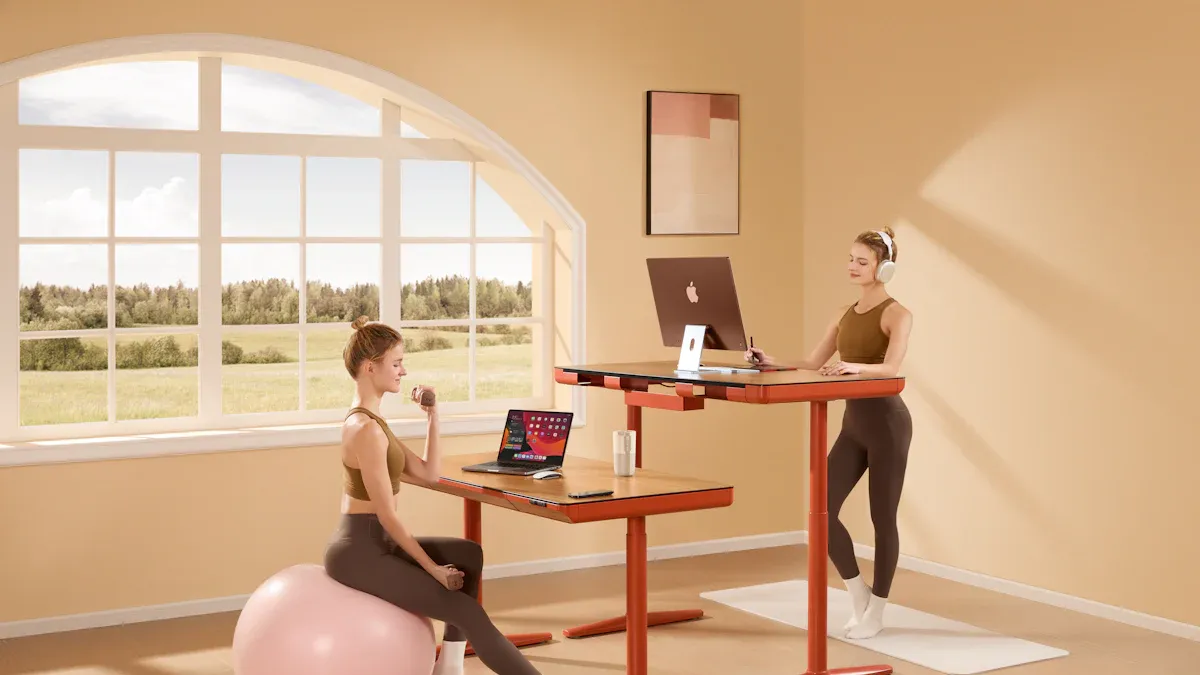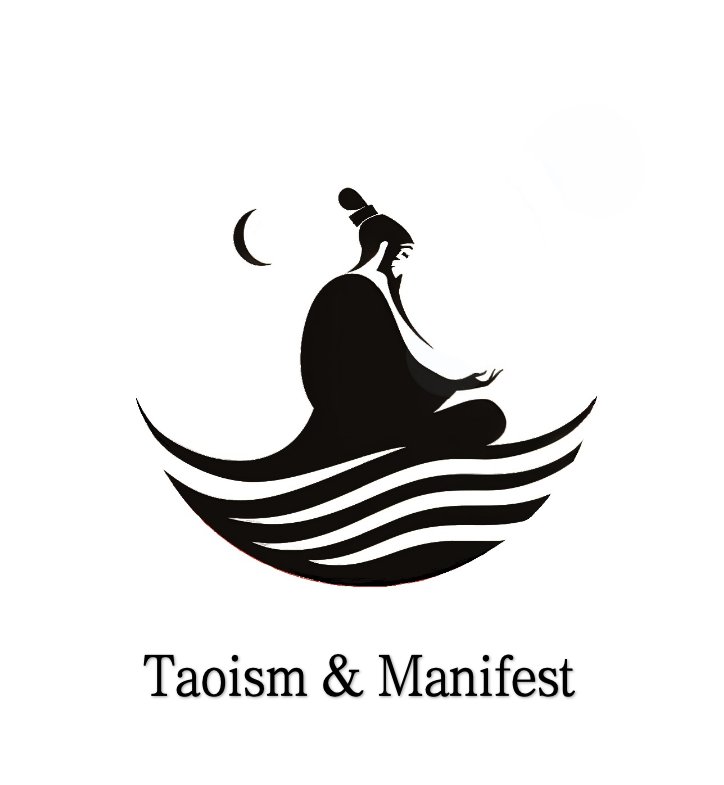
You can use Taoism and tai chi to feel calm at your desk. Just spend a few minutes doing gentle exercise. These movements help you let go of stress and relax. Anyone can do them, no matter your ability. Many people who work at desks get sore necks and shoulders. Tai chi for beginners is an easy way to feel better and focus more. You do not need any special tools to practice. Each time you try, you will feel more relaxed. Your posture will get better, and your mind will feel clear. Beginners can enjoy each movement and feel the good effects right away.
Key Takeaways
Seated Tai Chi has slow, gentle moves. It helps lower stress and can help neck and shoulder pain at work. Practicing Tai Chi helps you sit up straight. It helps your blood flow and helps you focus. This makes you feel more balanced and full of energy. Tai Chi uses Taoism ideas about balance and harmony. It teaches you to breathe naturally and stay calm. Make sure your chair supports your back. Clear space around you so Tai Chi is safe and easy. Doing short Tai Chi sessions during the day can make you feel happier. It helps you relax and fits into busy work days.
Why Practice Tai Chi at Work
Office Stress Relief
You spend many hours at your desk. This can lead to tight muscles, sore shoulders, and a tired mind. Tai Chi offers a gentle way to release tension and bring relaxation into your workday. When you practice Tai Chi, you use slow, flowing movements that help your body and mind let go of stress. You do not need to stand up or leave your chair. Even beginners can enjoy these movements and feel the benefits right away.
Tai Chi reduces mental stress and helps your muscles relax.
The movements improve your posture and circulation.
You can ease pain in your neck, shoulders, and lower back.
Tai Chi for beginners is simple and safe for everyone.
You may notice that your breathing becomes deeper and calmer. This helps your qi flow smoothly through your body. As you move, you feel more balanced and peaceful. Many office workers find that Tai Chi brings a sense of well-being and calm to their busy day.
Tip: Try a few minutes of Tai Chi when you feel tense. You may feel lighter and more focused after just one movement.
Focus and Well-Being
Tai Chi does more than relax your body. It also sharpens your mind. The movements require you to pay attention and remember each step. This practice boosts your mental health and helps you stay alert. You may find it easier to solve problems and stay on task after a short Tai Chi session.
Tai Chi supports brain health by improving memory and attention.
The exercise increases your energy and helps you feel refreshed.
Regular movement can lift your mood and help you sleep better.
You do not need special skills to start. Beginners can follow simple movements and enjoy the mental and emotional benefits. Tai Chi for mental health is a great way to care for your mind and body at work. When you practice, you help your qi flow, which supports your overall health and well-being. Many people notice that their creativity and productivity improve with regular tai chi practice.
Note: Making Tai Chi a daily habit can help you feel more balanced, focused, and happy at work.
Taoism Principles in Exercise

Balance and Harmony
You can find the heart of Taoism in every Tai Chi movement. Taoism teaches you to seek balance and harmony in life. When you practice Tai Chi, you use both softness and strength, stillness and movement. This balance helps your body and mind work together. You learn to move with the natural flow of energy, called qi. Each movement in Tai Chi follows the idea of yin and yang, which are opposite forces that support each other. You do not force your body. Instead, you let your energy guide you. This approach brings a sense of peace and stability.
Tai Chi encourages you to relax and let go of tension.
You become more aware of your body and your surroundings.
Movements feel natural and easy, matching your own rhythm.
You learn to stay calm and steady, even when things change.
Practicing balance in Tai Chi helps you feel more centered at your desk.
Harmony in Tai Chi means you connect your movements with your breath and your mind. You feel grounded and present. This connection supports your health and helps your qi flow smoothly. Many beginners notice that their posture improves and their energy feels more balanced after just a few minutes.
Mindful Breathing
Breathing exercises are a key part of Tai Chi and Taoism. You focus on slow, deep breaths. This mindful breathing calms your mind and supports your health. When you match your breath with each movement, you help your qi move through your body. Meditation and breathing exercises together create a strong sense of mindfulness.
You can use breathing exercises to reduce stress and improve focus. Deep breathing lowers your heart rate and helps your body relax. It also supports your mental and emotional well-being. Many people find that mindful Tai Chi at their desk makes them feel more alert and less anxious. Meditation and coordinated breathing help you stay present and focused on your work.
Tai Chi practice uses meditation, breathing, and movement to support your health. You build energy, improve your mood, and feel more connected to yourself. Beginners often notice better concentration and a sense of calm after just a short session. With regular practice, you can enjoy the benefits of Taoism, meditation, and qi in your daily life.
Preparing for Seated Tai Chi
Workspace Setup
You can create a space at your desk that helps you enjoy Tai Chi. A good setup makes each movement easier and safer. Start by choosing a chair that supports your spine. This helps you keep a healthy posture during Tai Chi movements. Adjust your chair so your feet rest flat on the floor. Your knees should stay at a right angle. Place your desk at a height that lets your arms move freely. This prevents slouching and helps you perform each movement with comfort.
Set your computer monitor at eye level. This reduces eye strain and encourages you to sit upright. You can also create a small mindfulness zone at your desk. Add a cushion or a comfortable seat if possible. This makes your Tai Chi movements feel more relaxing. Try to keep your workspace clear of clutter. Open space gives you room for gentle exercise and flowing movements.
Keep your desk at a comfortable height for arm movement.
Position your monitor to help you maintain good posture.
Make space for Tai Chi movements by clearing your desk.
Add a cushion or comfortable seat for extra support.
Comfort and Safety
You want to feel safe and relaxed during Tai Chi. Always check your chair before you start. Make sure it is stable and will not roll away. Sit with your back straight and your feet flat. This helps you find balance and control in every movement. Beginners should move slowly and listen to their bodies. If you feel any pain, stop the exercise and rest.
Take regular breaks to stretch and change your posture. This keeps your body fresh and ready for more Tai Chi movements. Try simple desk-based movements like seated spinal twists or gentle arm circles. These movements help you release tension and improve your balance. Remember, Tai Chi is about gentle movement and mindful breathing. You do not need to rush. Enjoy each movement and focus on how your body feels.
Tip: Practice Tai Chi with a friend or coworker. Sharing movements can make the exercise more fun and help you stay motivated.
Tai Chi Movements at Your Desk

Centering Breath Exercise
Start your Tai Chi session with a centering breath exercise. Sit up straight with your feet flat on the floor. Rest your hands on your thighs. Close your eyes or look softly ahead. Inhale slowly through your nose, letting your belly expand. Exhale gently through your mouth. Repeat this breathing for several cycles. Focus on the rise and fall of your breath. This movement helps you calm your mind and prepare your body for more Tai Chi movements.
Deep breathing exercises can lower your blood pressure, reduce stress, and improve your mental health. Even a short session can help you feel more relaxed and focused at your desk.
Tips for Safe Practice:
Keep your shoulders relaxed.
Breathe deeply but comfortably.
Let your breath guide your movement.
Neck Rolls Movement
Neck rolls release tension in your neck and shoulders. Sit tall and relax your arms by your sides. Drop your chin gently toward your chest. Slowly roll your head to the right, bringing your ear toward your shoulder. Continue the circle, moving your head back and then to the left. Complete a full circle, then reverse the direction. Move slowly and smoothly. This movement improves flexibility and helps your qi flow through your upper body.
You may notice less stiffness and better posture after a few neck rolls.
Tips for Safe Practice:
Move within a comfortable range.
Avoid sudden or jerky movements.
Breathe out as you roll forward, breathe in as you roll back.
Shoulder Circles Exercise
Shoulder circles are a classic Tai Chi movement for easing shoulder fatigue. Sit with your back straight and arms relaxed. Lift your shoulders up toward your ears. Move them back, then down, and finally forward in a smooth circle. Repeat several times, then switch directions. This exercise helps your energy move through your shoulders and upper back. You will feel more relaxed and ready for the next movement.
Smooth, controlled circles help relieve tension and improve your posture.
Tips for Safe Practice:
Keep your arms loose.
Focus on slow, steady circles.
Match your breathing to your movement.
Seated Wave Movement
The seated wave movement brings gentle flow to your spine and arms. Sit tall with your feet grounded. Place your hands on your knees. Inhale and arch your back slightly, lifting your chest. Exhale and round your back, tucking your chin. Let your arms follow the wave, moving forward and back with your spine. This movement encourages your qi to flow and helps you feel more balanced.
The wave movement supports your core techniques and movements, making you feel more energized and relaxed.
Tips for Safe Practice:
Move with your breath.
Keep the motion gentle and smooth.
Feel the energy moving up and down your spine.
Arm Flow Exercise
Arm flow exercises boost circulation and reduce fatigue. Sit comfortably and extend your arms out to the sides. Inhale as you raise your arms overhead, palms facing each other. Exhale as you lower your arms in a wide arc. Repeat this movement several times. Arm flow movements activate your muscles and help your qi move freely. You will notice more energy and less stiffness in your arms and shoulders.
Arm flow exercises increase blood flow and delay fatigue. These movements help restore your energy and improve your focus during long workdays.
Tips for Safe Practice:
Keep your movements slow and controlled.
Relax your wrists and fingers.
Breathe deeply with each movement.
Grounding Movement
Finish your Tai Chi session with a grounding movement. Place your feet flat on the floor and rest your hands on your thighs. Take a deep breath in, feeling your connection to the ground. Exhale slowly, letting your body relax. Imagine roots growing from your feet into the earth. This movement helps you feel stable and calm. Grounding movements support your meditation and balance your qi.
Grounding movements reduce stress and bring mental clarity. You will feel more centered and ready to return to your work.
Tips for Safe Practice:
Focus on your breath and your connection to the floor.
Let your energy settle with each exhale.
Use this movement whenever you need a moment of calm.
Table: Core Techniques and Movements for Desk Tai Chi
Tai Chi Movement |
Primary Focus |
Benefits for Desk-bound Practitioners |
|---|---|---|
Hold the Qi Ball |
Arms and chest |
Builds arm strength, enhances energy flow, sharpens mental focus |
Hold the Mirror |
Arms and wrists |
Improves arm flexibility, promotes relaxation, eases shoulder tension |
Hold up the Heavens |
Full body stretch |
Improves upper body flexibility, promotes better posture, reduces tension |
Heel Raises |
Lower legs |
Strengthens calves, improves ankle flexibility and circulation |
Golden Lion Shakes Its Mane |
Neck and shoulders |
Relieves neck tension, improves posture and flexibility |
Side Drawing Hands as Fists |
Arms and shoulders |
Strengthens upper body, improves shoulder mobility and coordination |
Press Palms |
Hands and wrists |
Enhances arm strength, opens chest, promotes relaxation and energy flow |
You can use these core techniques and movements to support your health and energy throughout the day. Regular practice of Tai Chi at your desk helps you maintain good posture, improve your breathing, and keep your qi flowing. Each movement brings you closer to balance and relaxation, making your workday more enjoyable.
Integrating Practice into Your Day
Routine and Reminders
You can add Tai Chi to your workday with easy reminders. Try not to make a strict plan. Look for times when you have a break, like after meetings or before lunch. This way, you can do Tai Chi even when you are busy. Many people like to practice during lunch or early in the day. You can use a sticky note or set a phone alert to remind you to move and breathe.
Tip: Make a short phrase to help you remember Tai Chi. For example, “Breathe, move, and feel better.” This can remind you to practice, even when you are busy.
You can connect Tai Chi to certain things, like finishing a big job or feeling tight shoulders. This makes it more special and helps you want to keep going. If you work at home, change your space or time as you need. Being flexible helps you fit Tai Chi into your day and keeps you healthy.
Making It a Habit
Doing Tai Chi at your desk often is good for you. It can help your mood, lower stress, and help you feel balanced. When you practice a lot, you may focus better and have more energy. Meditation and mindful movement together help you feel calm and happy at work.
Join a group or ask coworkers to try Tai Chi with you. Friends make it easier to keep up the habit.
Use apps or online videos to help you with Tai Chi and meditation.
Celebrate small wins, like feeling less tense or more focused after you practice.
Doing Tai Chi every day can help you feel better and more connected to yourself and your job. Mind-body practices like Tai Chi and meditation make a healthy routine for your mind and body.
You can start Tai Chi at your desk today. Try one or two Tai Chi movements for quick relief and better focus. Tai Chi uses simple steps that fit into your workday. You do not need special tools or skills. When you practice Tai Chi, you help your mind and body feel calm. Regular practice brings more energy and less stress. Share Tai Chi with your coworkers to create a peaceful office. Let Tai Chi and taoism guide your daily practice for lasting well-being.
FAQ
How often should you practice seated Tai Chi at your desk?
You can practice these movements daily. Even a few minutes each day helps you feel more relaxed and focused. Regular practice supports your well-being and keeps your energy balanced during work.
Can beginners try these Tai Chi movements without experience?
Yes! Tai Chi for beginners is simple and safe. You do not need any special skills. Just follow the steps, listen to your body, and enjoy the gentle exercise.
What if you feel stiff or tired during the workday?
Try mindful Tai Chi or breathing exercises. These movements help you release tension and improve your posture. You will notice better balance and more energy after a short session.
How does Tai Chi support mental and emotional health?
Tai Chi uses coordinated breathing and slow movement. This practice calms your mind and lifts your mood. You will feel more focused and enjoy mental and emotional benefits throughout your day.
Can you use Tai Chi for meditation and relaxation at your desk?
Yes, you can. Tai Chi and meditation work well together. Use slow breathing and gentle movement for quick relaxation. This supports your wellness and helps you return to work with a clear mind.






